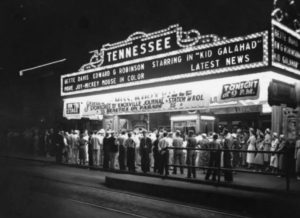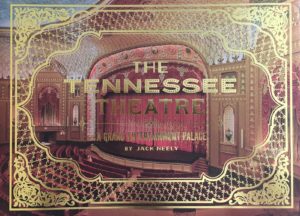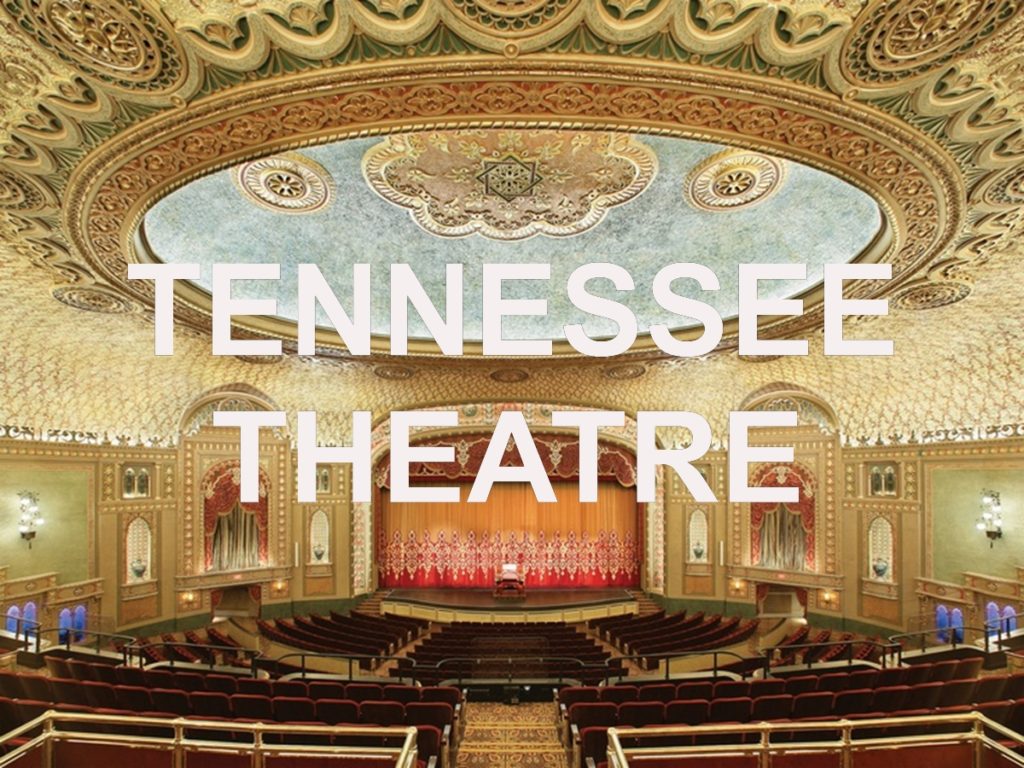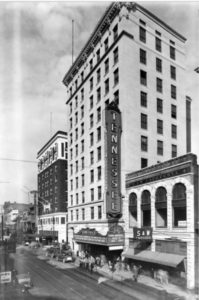Tennessee Theatre
First opened in October 1928, as a “motion picture palace,” the Tennessee was designed by the Chicago firm of Graven & Mayger in the extravagant and short-lived Moorish Revival style, with multiple other influences. And it was a long-promised project of Hollywood’s Paramount studio.
https://www.knoxvilleweekend.com/knoxville-chronicles-tennessee-theatre/
In a typical week, the theater debuted two new movies, most of them here for just three nights each. That’s why the theater, which originally seated almost 2,000, had to be so big. The Tennessee showed more than 100 new feature films a year.
But it was not just a movie theater, especially in its early years. The first movies shown at the Tennessee are considered “silents” because they didn’t include recorded conversation, although most came with their own musical soundtracks. By 1930, though, most movies were “talkies” with recorded dialogue. A Mighty Wurlitzer organ, installed with the theater’s construction, was considered a necessity in big movie theaters, because a live organist had played an accompaniment to the movies as they were shown. By the time the Tennessee opened, recorded soundtracks made this unnecessary, but a live organist greeted theater audiences for decades.
Each movie followed a vaudeville show, typically four acts that usually included a singer or musician, but might also include a magician, an acrobat, a comedian, a psychic, or an animal act. Several nationally popular performers, including jazz guitarist Nick Lucas and crooner Gene Austin, kept the audience entertained while they were waiting for the movie. Even Glenn Miller’s often-mentioned national broadcast at the Tennessee in 1940 was before a regular showing of a feature film. Young Cuban actor and musician Desi Arnaz performed four shows at the Tennessee later that year, singing, playing guitar, rhumba dancing, and promoting a movie called Too Many Girls.
One of its most surprising shows was the “Tom Mix Roundup” of 1933, featuring the famous cowboy actor and his mini rodeo and circus. He rode his famous horse, Tony, on stage, after leading the big animal in through the lobby from Gay Street. Mix’s show, which included acrobats, appeared before cheering crowds eight times in a row.
The most popular live show may have been in February, 1935. The legendary “Ziegfeld’s Follies,” featuring 100 performers, headed by singer, dancer, and comedian Fannie Brice, filled all the theater’s seats, with at least 100 more guests buying permission to stand in the back. The variety show of comedy and music was called “The Biggest Attraction Ever Beheld in Knoxville.”

“Kid Galahad” starring Bette Davis and Edward G. Robinson at the Tennessee Theatre in 1937. McClung Historical Collection.
The most popular movie ever shown at the Tennessee was probably Walt Disney’s Snow White,which showed here in April, 1938. In an unprecedented one-week run, perhaps 70,000 people saw the movie, shown to packed houses about 35 times in a row.
In 1940, big-band leader and pop star Glenn Miller stopped at the Tennessee for a 15-minute live-audience show broadcast nationally on CBS radio. A few months later, young Cuban singer and dancer Desi Arnaz performed four shows at the Tennessee, singing, dancing, and playing guitar, but also promoting his new romantic comedy, Too Many Girls, which included a climactic scene with the Tennessee Vols.
Some of the Tennessee’s most important history involves performers who were not yet famous when they performed there. Future Grand Ole Opry star Roy Acuff, the Knoxville fiddler who later played a major role in making Nashville “Music City,” gave his first-ever performance at the Tennessee in 1932.
Several movies saw their regional or even world premieres at the Tennessee. One of the biggest events in the theater’s history was the 1953 world premiere of So This Is Love, a biopic about East Tennessee opera star Grace Moore. Four actors in the movie, including singer Kathryn Grayson and a young pianist-singer named Merv Griffin, attended and performed that night to a standing-room-only audience.
The Tennessee stopped screening new movies in 1972. Since 1980, the theater has hosted mostly live shows since then, including Johnny Cash, Chet Atkins, and B.B. King, but with an occasional movie that helps people remember what it was built for.
Frank Capra, director of the holiday classic, It’s a Wonderful Life, came to the Tennessee in December 1980, and, two nights in a row, answered Knoxvillians’ questions about his career and the movie industry.
In 2005, a multi-million-dollar restoration revived the theater’s original 1928 look, but also transformed it into a modern performing-arts center. Since then, hundreds of major performers have drawn standing ovations there. Shows at the Tennessee have occasionally been described in the national press, especially concerning the famous Big Ears Festival.
 In 2015, the Tennessee Theatre Foundation, the nonprofit responsible for keeping the old theater going, published the large illustrated book, The Tennessee Theatre: A Grand Entertainment Palace, written by Jack Neely and designed by Robin Easter and Whitney Hayden. The book, the first one ever published about the Tennessee, tells the theater’s rich, fascinating story. All profits from the book go to help the Tennessee Theatre Foundation. You can buy the book at the Tennessee Theatre box office or on their online Gift Shop.
In 2015, the Tennessee Theatre Foundation, the nonprofit responsible for keeping the old theater going, published the large illustrated book, The Tennessee Theatre: A Grand Entertainment Palace, written by Jack Neely and designed by Robin Easter and Whitney Hayden. The book, the first one ever published about the Tennessee, tells the theater’s rich, fascinating story. All profits from the book go to help the Tennessee Theatre Foundation. You can buy the book at the Tennessee Theatre box office or on their online Gift Shop.








